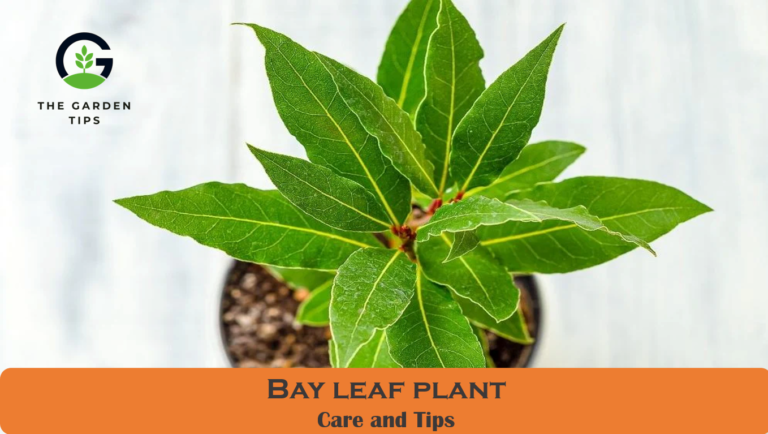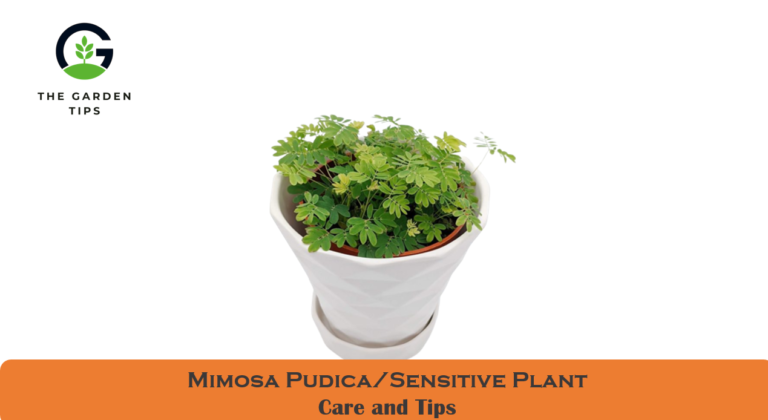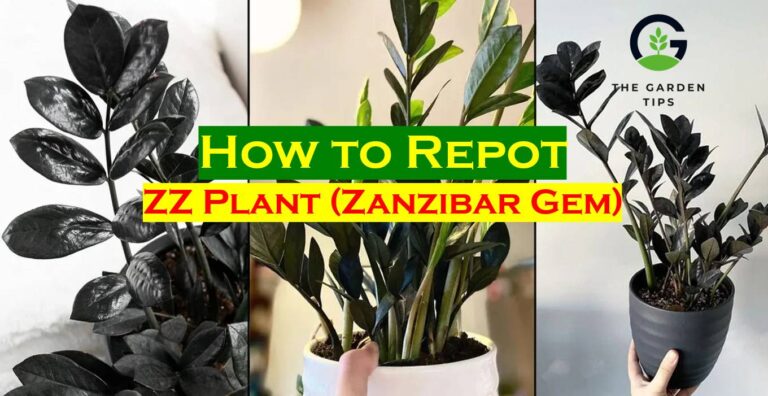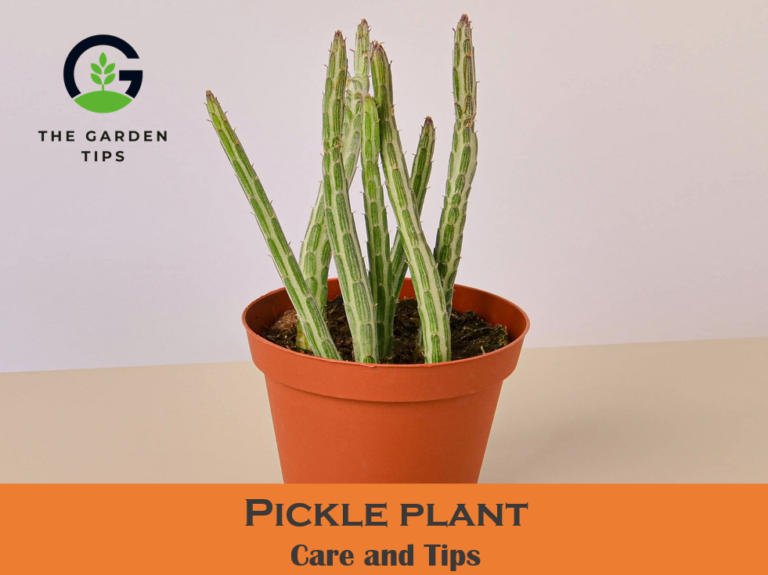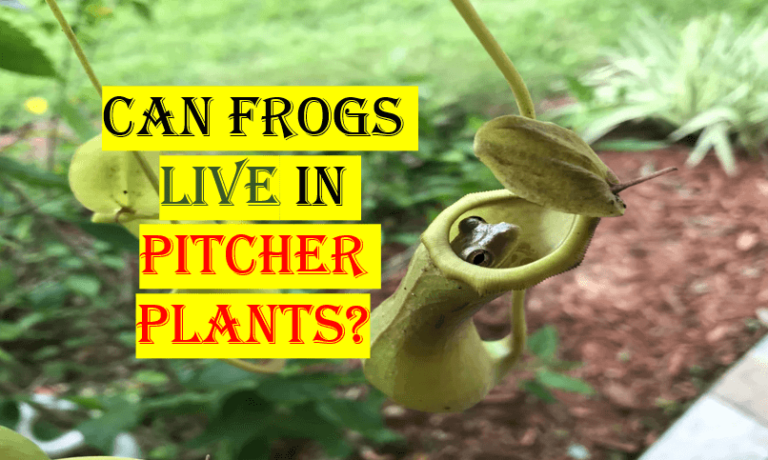Gardening is a gratifying and rewarding activity that demands some know-how as well as a lot of patience. There are some techniques and tactics that will help you create a flourishing and attractive garden, whether you are a novice or a seasoned professional. This post will go over the top 20 gardening techniques that any gardener, whether new to the game or a seasoned veteran, should be aware of.
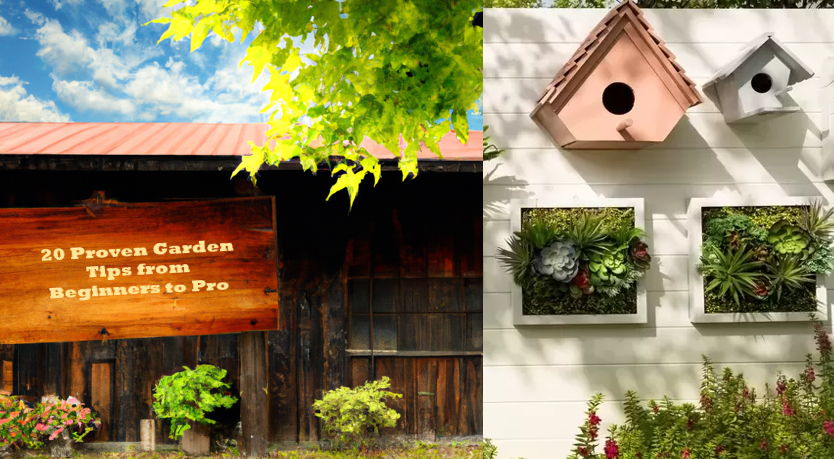
These ideas can help you obtain the best potential outcomes in your garden, from correct soil preparation to effective watering strategies. This advice will offer you the information and confidence you need to flourish in the garden, whether you’re producing veggies, flowers, or herbs. So grab your gloves and let’s begin!
Choose the right location:
The proper placement for your garden is critical to its success. Most plants require at least 6 hours of direct sunshine every day to thrive. When deciding where to plant your garden, consider issues such as soil quality, closeness to water supplies, and potential exposure to high winds.
It’s also critical to think about the surrounding environment and any pests. A well-drained area away from high winds and pests will offer your plants the best chance of thriving. Take your time researching the best site, and you will be rewarded with a lovely and productive garden.
Plan ahead:
A well-planned garden is essential for success. Begin by studying the sorts of plants you want to cultivate and determining how much space and sunshine they require. Make a list of the tools and equipment that you will require, such as a shovel, hoe, and watering can. Choose a pattern for your garden and think about where each plant should go, taking into consideration its light and water requirements.
It’s also critical to prepare ahead of time for irrigation and soil preparation. Planning ahead of time will assist guarantee that your garden is productive, attractive, and low-maintenance. Don’t be hesitant to ask experienced gardeners for help or to explore gardening books and internet resources. Your garden may be a source of delight and pride for years to come with a little planning and preparation.
Soil preparation:
Soil preparation is a critical stage in growing a healthy garden. The
health and growth of your plants are directly affected by the quality of the soil. To begin, test the soil to assess its pH and nutrient content. Based on the results, you may improve the soil structure and fertility by adding amendments such as compost, fertilizer, or lime. It is also critical to clear the area of any weeds and garbage.
Using a shovel or a tiller to loosen the soil can allow for improved root growth and water penetration. Proper soil preparation will provide your plants with the necessary foundation for growth, resulting in healthier and more productive plants. Don’t scrimp on this step since it will pay off in the long term.
Using proper tools:
It is essential to have the right equipment for a successful and happy gardening experience. A shovel, hoe, rake, and watering can are among the essential pieces of equipment. A pair of gloves is also recommended to keep your hands safe. A decent set of hand pruners and loppers is required for pruning.
A trowel may be used for planting and transplanting, whilst a cultivator can be used to loosen soil and remove weeds. A wheelbarrow, spade, and garden hose may also be useful if you intend on undertaking larger work. Investing in high-quality gardening equipment can not only make your jobs simpler, but they will also last longer and perform better.
Take excellent care of your instruments by cleaning and storing them after each use. You can tackle any gardening activity with confidence and easily if you have the correct equipment.
Hardscaping:
The use of non-living components such as stone, wood, and concrete in landscaping and gardening is referred to as xeriscaping. Pathways, patios, retaining walls, and outdoor fireplaces are examples of hardscaping elements that may serve both utilitarian and aesthetic functions.
Gardeners may construct outdoor living areas, improve the overall look of the garden, and tackle practical concerns like drainage and soil erosion by including hardscaping features in their designs. Because hardscaping may increase the value of a property, it is a popular trend in both residential and commercial landscaping.
When constructing a hardscape, consider aspects such as the size and shape of the area, the surrounding landscape, and the architectural style. Gardeners may create a pleasant and useful outdoor area that can be enjoyed for years to come by carefully selecting and installing hardscaping materials.
Know more about hardscaping here:
https://thegardentips.com/category/landscaping/hardscaping/
Watering:
Watering is an important component of gardening that may mean the difference between a healthy garden and one that is suffering. The frequency and amount of water required will vary depending on factors such as plant kind, weather conditions, and soil type. To stimulate deep root growth, it’s ideal to water thoroughly and less frequently.
Overwatering can induce root rot, while underwatering causes wilting and stress in plants. Create a watering schedule based on your plant’s needs, but be prepared to adapt it when conditions change. For a more effective and low-maintenance watering alternative, consider installing a drip irrigation system or soaker hoses.
Regular soil moisture monitoring can assist guarantee that your plants get the correct quantity of water. Watering your garden properly is critical to its health and success.
Xeriscaping:
Xeriscaping is a gardening technique that divides a garden into separate zones, each with its irrigation requirements. This kind of irrigation provides for more efficient and effective water consumption since each zone may be watered only as much as it requires, rather than watering the entire garden equally.
Xeriscaping is especially beneficial for gardeners with limited water resources since it conserves water by directing it exclusively to the plants that use it the most. Gardeners may use hydro-zoning to group plants with comparable water requirements together and construct separate irrigation systems for each zone.
Drought-tolerant plants, for example, might be put together in one zone, while plants that require more regular watering can be grouped in another. Proper Xeriscaping may aid in the reduction of water waste, the conservation of resources, and the promotion of healthy plant development.
Explore more about xeriscaping here:
https://thegardentips.com/category/landscaping/xeriscaping/
Mulching:
Mulching is a simple and efficient way to keep your garden looking healthy and beautiful. Mulch regulates soil temperature, retains moisture, suppresses weeds, and enriches the soil with organic matter. Mulch comes in a variety of forms, including bark, compost, and leaves. For most gardens, a coating of 2-3 inches is suggested, but leave a few inches around the base of plants to avoid rot.
Mulching in the spring can help your plants get a jump start by warming the soil and conserving moisture. Continue to add a fresh layer of mulch as needed during the growing season to maintain a constant depth. Mulching your garden properly can not only enhance its health and attractiveness, but it will also make your gardening duties easier and more efficient.
Know more about mulching on this platform:
https://thegardentips.com/category/landscaping/mulching/
Proper plant spacing:
Plant spacing is critical for a healthy, productive garden. Because each plant has distinct space requirements, it’s critical to know the exact requirements of the plants you intend to cultivate. Overcrowded plants may compete for light, water, and nutrients, resulting in lower growth and yields.
Plants that are too wide apart, on the other hand, might result in bare soil and an increased danger of weed development. Consider the mature size of the plants when planning your garden and provide enough room for them to attain their full potential. Proper spacing also promotes air circulation, which reduces the danger of illness and pest infestation.
Use garden planning tools, such as a garden plan or grid, to ensure that your plants are placed correctly. You’ll have a garden that looks amazing and delivers a plentiful crop if you take the effort to correctly position your plants.
Diseases:
Diseases are a prevalent issue in gardening, and they may have a substantial influence on plant health and aesthetics. Plants can be affected by a range of illnesses, including fungal infections, viral diseases, and bacterial diseases. Yellowing or wilting leaves, stunted development, and the emergence of spots, streaks, or other discoloration on leaves or stems are some of the most typical indications of plant diseases.
Plant infections may be prevented by practicing excellent garden cleanliness, which includes removing any dead or diseased plant material and preventing overcrowding of plants. Proper watering and fertilization can also aid in disease prevention by supporting healthy plant development. If a plant becomes infected, it is critical to respond quickly since early intervention can often assist to limit the spread of the disease and minimize its impact on the plant and other neighboring plants.
You can learn more about diseases here:
https://thegardentips.com/category/house-plants/diseases/
Pest control:
Pest management is essential in gardening since pests may quickly cause harm to your plants and lower harvests. The first stage in pest control is identifying the pest and learning about its life cycle and behavior. Pest issues can be reduced by cultural measures such as correct plant spacing and keeping healthy soil.
Physical measures, such as hand picking, obstacles, and traps, can be used to manage pests if necessary. When employing chemical controls, select products that are specific to the pest and follow the label guidelines. Always take measures and utilize the least harmful choices available.
Regular pest monitoring and early response are essential for effective pest management in your garden. You can preserve your plants and assure a plentiful crop by taking a proactive approach to pest management.
Find more on pest & pest control here:
https://thegardentips.com/category/house-plants/pest/
Fertilization:
Fertilization is a crucial part of gardening since it gives your plants the nutrients they need for growth and productivity. Soil testing is the most accurate approach to assess your garden’s nutrient requirements and the types of fertilizer that should be applied. Compost and manure are excellent organic fertilizers for adding nutrients and improving soil structure.
Inorganic fertilizers, like synthetic fertilizers, can be used to provide certain nutrients fast. It is critical to adhere to the appropriate application rates since over-fertilization can cause harm and have a detrimental influence on the ecosystem. Regular fertilizer, in conjunction with adequate watering and mulching,
can assist ensure that your plants receive the nutrients they require for maximum development and performance. You will have a lush and fruitful landscape if you take the time to properly fertilize your garden.
Explore more on fertilizers (fertilization) here:
https://thegardentips.com/category/house-plants/fertilizer/
Pruning:
Pruning is an important part of keeping a garden healthy and beautiful. It entails the removal of dead, diseased, or undesired plant material to promote new development and keep a plant’s overall form and size. Pruning may be done at any time of year, although the optimal period depends on the plant and the climate in which it grows.
Proper pruning procedures are essential for promoting healthy development and avoiding plant damage. Sharp, clean pruning tools should be used, and cuts should be done at a small angle directly above a node or lateral bud to stimulate the formation of new shoots. Pruning can also be used to control a plant’s growth and form, remove sick or damaged branches, and encourage the development of fruit or flowers.
Pruning can be a straightforward and pleasurable component of gardening with the right skills and equipment, allowing you to preserve the health and beauty of your plants for years to come.
You can find more on pruning here:
https://thegardentips.com/category/house-plants/pruning/
Proper plant selection:
A good garden is built on proper plant selection. Consider aspects such as sunshine needs, soil type, and climate, as well as the mature size and growth behavior of the plant while selecting plants. Investigating the precise requirements of the plants you intend to grow can assist guarantee that they are well-suited to the circumstances of your garden.
Plants that are resilient and well-adapted to your location are more likely to grow and resist pests. Consider integrating native plants into your yard if you want to attract animals such as butterflies and hummingbirds. Selecting plants with similar leaf and flower colors, textures, and forms may also add beauty and interest to your landscape.
With careful plant selection, you can create a garden that not only looks fantastic but also serves as a healthy home for animals.
Repotting:
Repotting is the act of transplanting a plant from one pot to another, and it is a key aspect of keeping container-grown plants healthy and vibrant. Plants require regular repotting as they develop because it gives them fresh soil and more area to thrive. Choose a container that is only slightly larger than the previous one for repotting, as too large a container might cause waterlogging, which can be damaging to the plant.
Use a well-draining potting mix, hydrate the plant well after repotting, and give it plenty of light and water. Repotting is also an excellent time to inspect a plant’s root system and clip away any damaged or diseased roots. Container-grown plants may thrive and provide beauty, aroma, and greenery to your indoor or outdoor areas with appropriate care and regular repotting.
You can explore more about repotting here:
https://thegardentips.com/category/house-plants/repotting/
Crop rotation:
Crop rotation is an important tool for gardeners because it improves soil health and reduces pest and disease concerns. Crop rotation works on the basic premise of growing different crops in the same site each year rather than planting the same crops in the same spot again. This aids in the disruption of insect and disease life cycles and decreases the accumulation of soil-borne pathogens.
Crop rotation also ensures that various nutrients are absorbed by different crops, lowering the danger of soil nutrient depletion. By separating your garden into divisions and planting different crops in each section each year, you may create a basic crop rotation plan.
When developing your crop rotation plan, keep in mind the growth habits and nutritional requirements of the crops you intend to cultivate. You will have a healthier and more productive garden if you use a crop rotation method.
Irrigation:
Irrigation is an important part of gardening since it supplies the water that plants require to grow. The amount and frequency of irrigation required will be determined by factors such as plant type, soil type, and climate. Overwatering can cause root rot and other issues, so keep track of how much water your plants are getting.
Drip irrigation systems are an excellent method to give plants the water they require while minimizing water waste. They also aid to decrease disease risk by keeping the plant’s leaves dry. Sprinkler systems may cover bigger areas, but they are less efficient than drip systems. When irrigating, keep water constraints in mind and aim to irrigate early in the morning or late in the evening, when evaporation is less likely.
A healthy and productive garden will benefit from adequate watering, mulching, and plant choices.
Plant Propagation:
Plant propagation is the act of creating new plants from existing ones and is an important part of gardening. Seed sowing, division, cuttings, and layering are all ways to propagate plants. Each approach has pros and disadvantages, and the optimal option will depend on the type of plant you wish to propagate as well as the resources available.
Seed planting, for example, is a simple and low-cost approach to creating a big number of plants, whereas division is an excellent way to expand the number of plants you have while simultaneously revitalizing an existing one. Cuttings and layering are excellent techniques for making precise replicas of a parent plant.
Regardless of the method you use, learning about plant propagation and experimenting with different approaches can be a fun and gratifying component of gardening, allowing you to build your plant collection and share plants with others.
You can find more on plant propagation here:
https://thegardentips.com/category/house-plants/plant-propagation/
Weed control:
Weed management is essential in gardening because weeds compete with your plants for water, nutrients, and sunlight. The most effective strategy to manage weeds is to keep them from growing in the first place. This may be accomplished by the use of mulch, which serves to limit weed development and preserve moisture in the soil. Plant spacing can also assist limit the number of weeds because there is less area for them to grow.
Hand weeding and hoeing can be efficient for eradicating tiny weeds, but bigger weeds may necessitate the use of a cultivator. When using chemical weed control solutions, carefully read the label and select products that are tailored to the type of weed you want
to manage. Remember that certain weed species are useful, providing habitat and food for wildlife, so strive to eliminate only troublesome weeds.
You’ll have a weed-free garden with healthy, growing plants if you take a proactive approach to weed control.
Proper care:
Proper upkeep is essential for any garden’s success. It is critical to understand your plants’ demands, such as the quantity of sunshine and water they require, as well as the perfect soil conditions and temperature range, to maintain them healthy and growing. Regular garden monitoring is particularly crucial since it may help you discover and treat issues such as pests, illness, or environmental stress early on.
Furthermore, actions such as mulching, fertilizing, and composting may help guarantee that your plants receive the nutrients they require to grow strong and healthy. Your garden may be a beautiful and productive environment that gives food, beauty, and a sense of connection to the natural world if properly cared for.
Whether you have a vast outdoor space or a little container garden, investing in plant care will pay off in the shape of a flourishing and beautiful garden.
You can find more about plant care here:
https://thegardentips.com/category/house-plants/care/
Using raised beds:
Raised beds are an excellent method to increase the quality of your garden soil and create an atmosphere conducive to growing a wide range of plants. Raised beds improve drainage by allowing excess water to drain away from the plant roots. This is especially useful for gardeners who have heavy clay soil or live in locations prone to standing water.
Raised beds also allow gardeners to add a bespoke mix of soil, compost, and other amendments that are well-suited to the specific needs of their plants, making it easier to regulate the kind of soil utilized. Furthermore, raised beds may make garden management easier since plants can be placed in a way that makes them easier to care for, decreasing the amount of time and effort necessary.
Raised beds are an excellent method to create a more productive, appealing, and manageable garden.
Grow in containers:
Growing plants in containers allow you to create a garden anywhere, even if you have a limited outside area. Containers are made of many materials, including plastic, metal, and terra cotta, and may be used to produce a variety of plants, including vegetables, herbs, flowers, and even tiny trees.
When selecting a container, it is critical to consider the container’s size and weight, as well as the sort of plants you intend to cultivate. To offer appropriate nutrients and moisture retention for the plants, a high-quality potting mix should be utilized. Furthermore, container plants may want more regular watering than plants grown in the ground, so keep an eye on soil moisture levels.
You may have a successful container garden that adds beauty and delicious produce to your house with appropriate maintenance.
Proper seed selection:
Proper seed selection is critical to having a successful and fruitful garden. Consider the temperature and growth conditions of your garden, as well as the maturation date and possible yield of the plants, while picking seeds. Heirloom or open-pollinated seeds are frequently a good choice since they are well-adapted to local growing circumstances and produce plants with consistent fruit and vegetable features.
Hybrid seeds are also a wonderful option since they frequently provide enhanced disease resistance and higher yields. Consider the quantity of area available in your garden as well as the size of the plants when fully grown when picking seeds. You may choose seeds that will grow in your garden and offer a plentiful crop by carefully evaluating these aspects.
Composting:
Composting is an easy and efficient approach to improving soil and decreasing trash in the garden. Compost is created by decomposing organic materials such as leaves, grass clippings, fruit and vegetable waste, and coffee grounds to create a nutrient-rich soil supplement. Simply put your organic waste in a bin or pile to begin a compost pile, and add water and air as required to assist the items breaking down.
Over time, the compost will transform into a black, crumbly product that is high in nutrients and ideal for use as a top dressing for potted plants. Composting is not only beneficial to your plants, but it also helps to decrease waste and protect natural resources by diverting organic waste from landfills.
Composting is a great item to have in your gardening toolbox, whether you are a novice or an expert gardener.
Read more on composting here:
https://thegardentips.com/category/landscaping/composting/
Garden security:
Garden security is a critical part of gardening that is sometimes disregarded. Gardens are subject to theft, vandalism, and other sorts of harm, therefore it is essential to take precautions to safeguard your garden and its contents. Installing locks on gates, employing motion-detecting lights to prevent burglars, and planting thorny plants or bushes along the perimeter of the garden are all standard garden security techniques.
Aside from physical security, it may also be beneficial to educate yourself about common plant pests and illnesses, as well as take actions to avoid and control these difficulties. Gardeners can guarantee that their gardens are safe and secure by taking the time to design and implement garden security measures and that they may enjoy their hard work for years to come by taking the time to plan and implement garden security measures.
Garden security is a crucial element of being a responsible and successful gardener, whether you have a vast backyard or a little patio garden.
Find more about garden security here:
https://thegardentips.com/category/landscaping/garden_security/
Educate yourself:
Self-education is a vital step in becoming a competent gardener.
There is an abundance of gardening material accessible, ranging from books and publications to internet resources and gardening workshops. Begin by understanding the fundamentals, such as the kind of soil and climate in your location, the requirements of the plants you wish to produce, and the best planting and maintenance practices.
You may continue to learn and improve as a gardener as you acquire experience, explore new techniques, experiment with new plants, and search for new challenges. Connecting with other gardeners through online forums, community organizations, or local gardening clubs may also be a terrific way to enhance your expertise and build new gardening connections.
Whether you are a novice or an experienced gardener, investing in your education can help you develop a flourishing and attractive garden that will provide you delight for years to come.
This gardening advice will help you get started and will give a firm foundation for both novice and experienced gardeners. You may enjoy the beauty and wealth of a healthy garden with a little patience and work.
Conclusion:
Gardening can be a fun and fulfilling activity for both beginners and experts. Whether you’re just getting started or have been gardening for years, it’s critical to grasp the fundamental concepts of gardening, such as soil preparation, irrigation, and correct plant selection.
You may assure a healthy and thriving garden by following the suggestions and practices outlined in this article. Don’t be scared to explore new approaches and, most importantly, have fun while seeing your plants develop and thrive. Remember that patience, tenacity, and a love of nature are essential for successful gardening.


